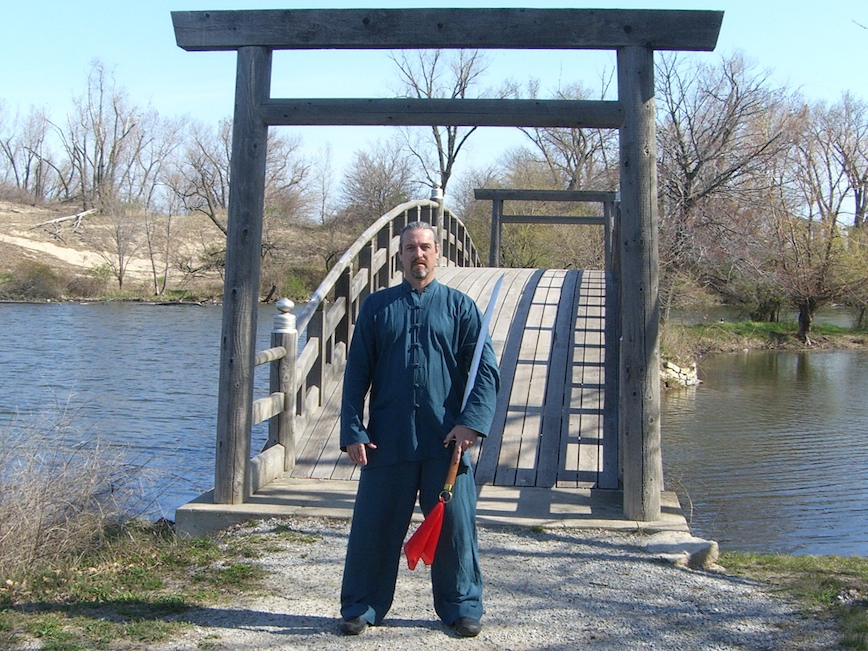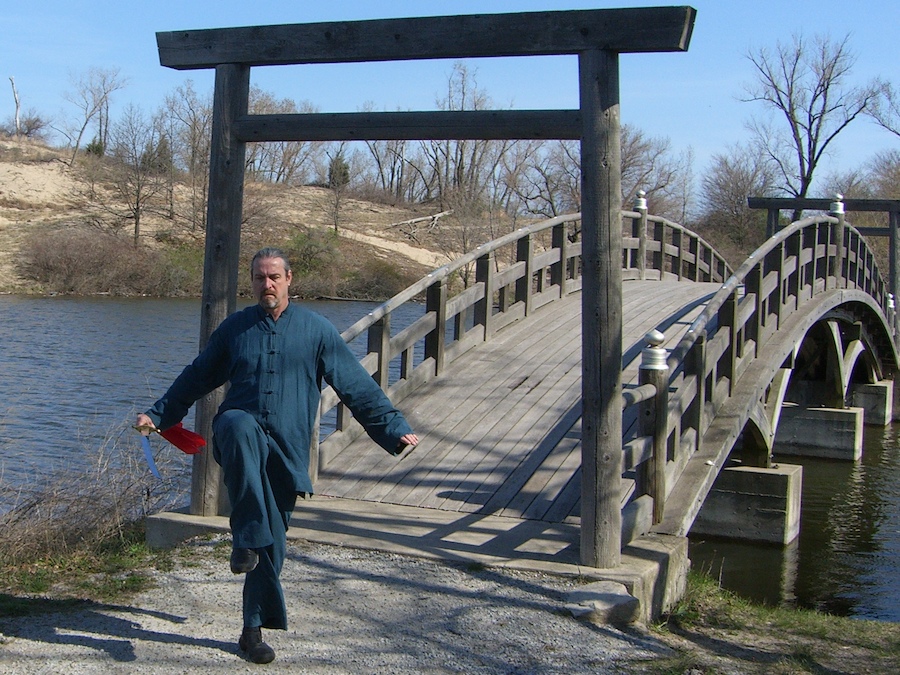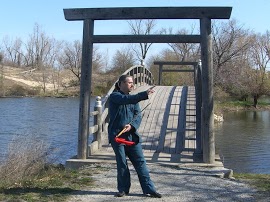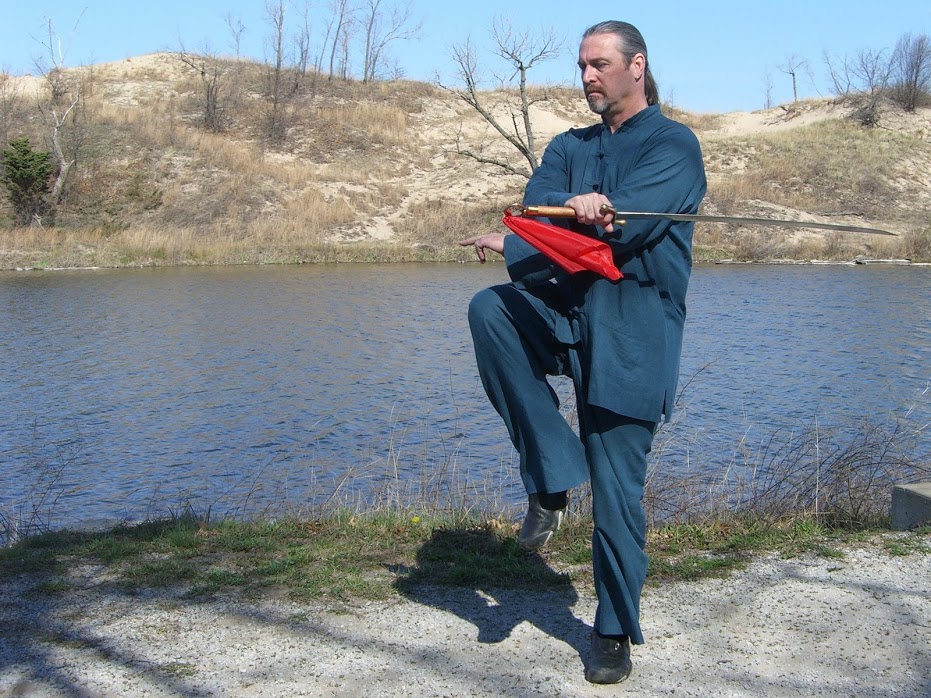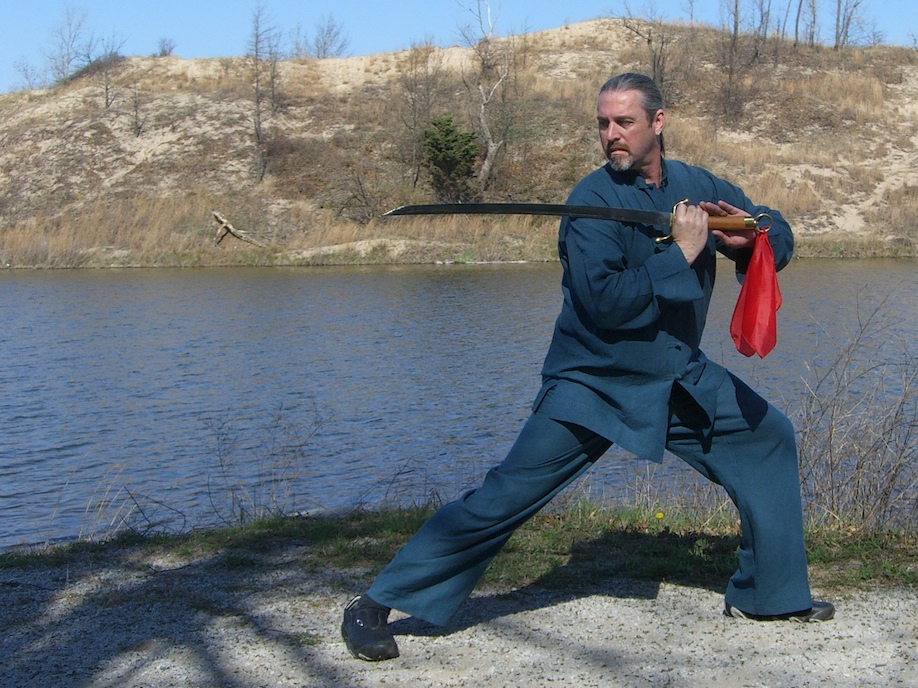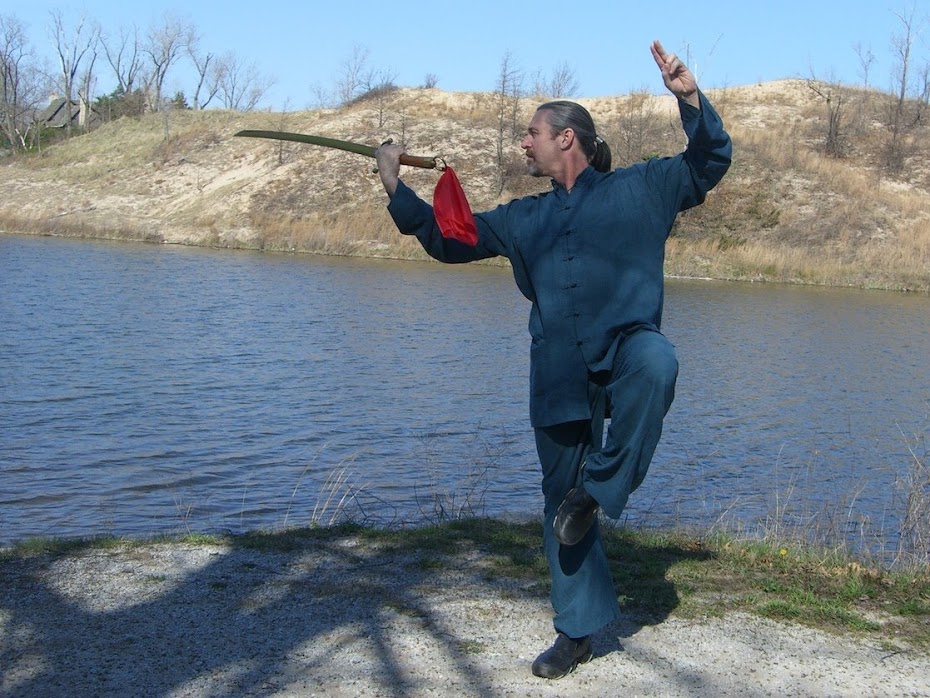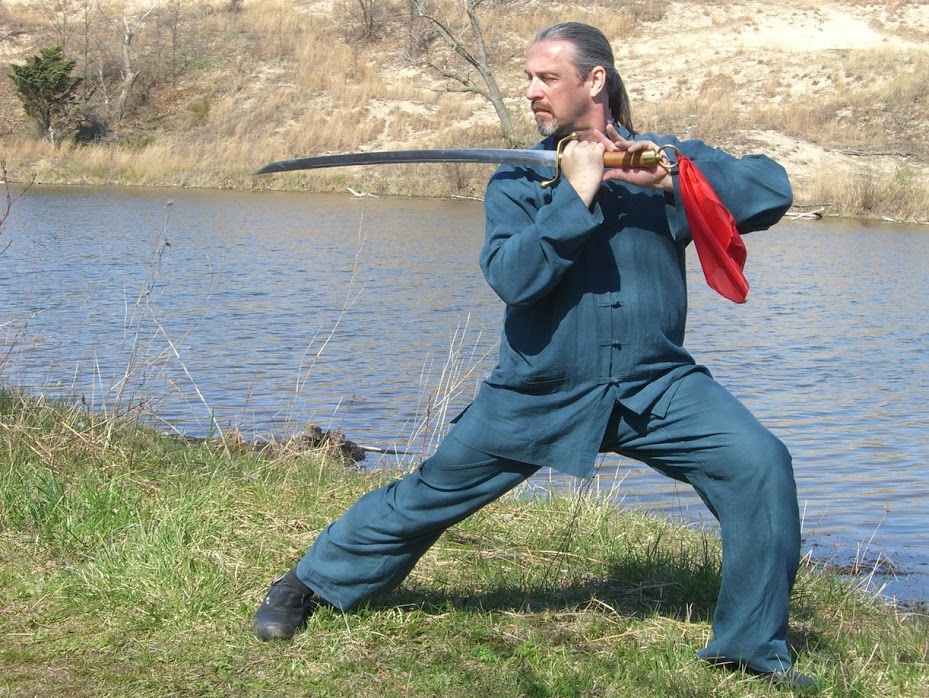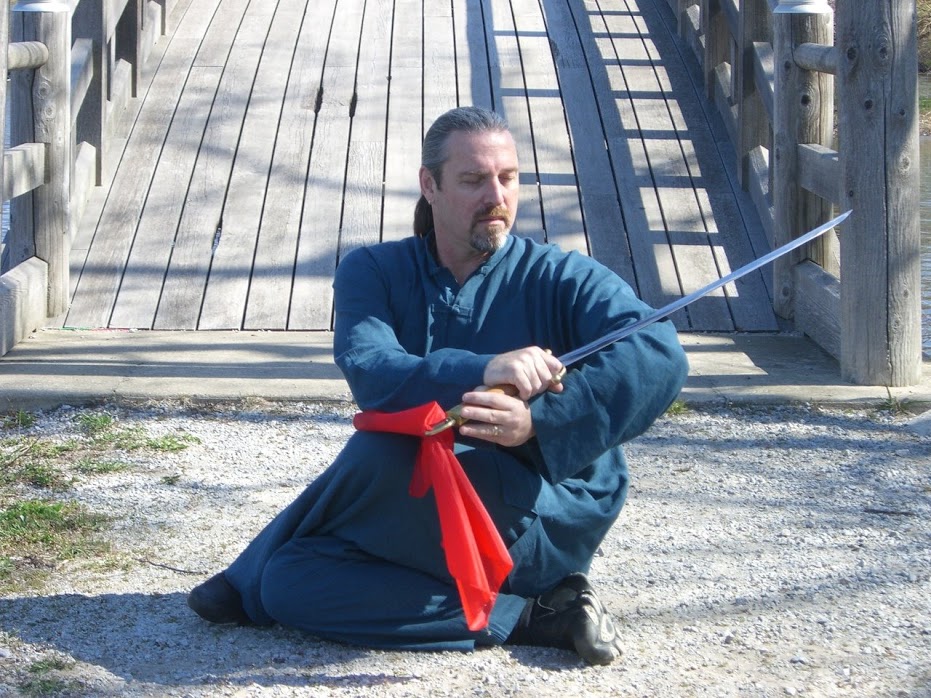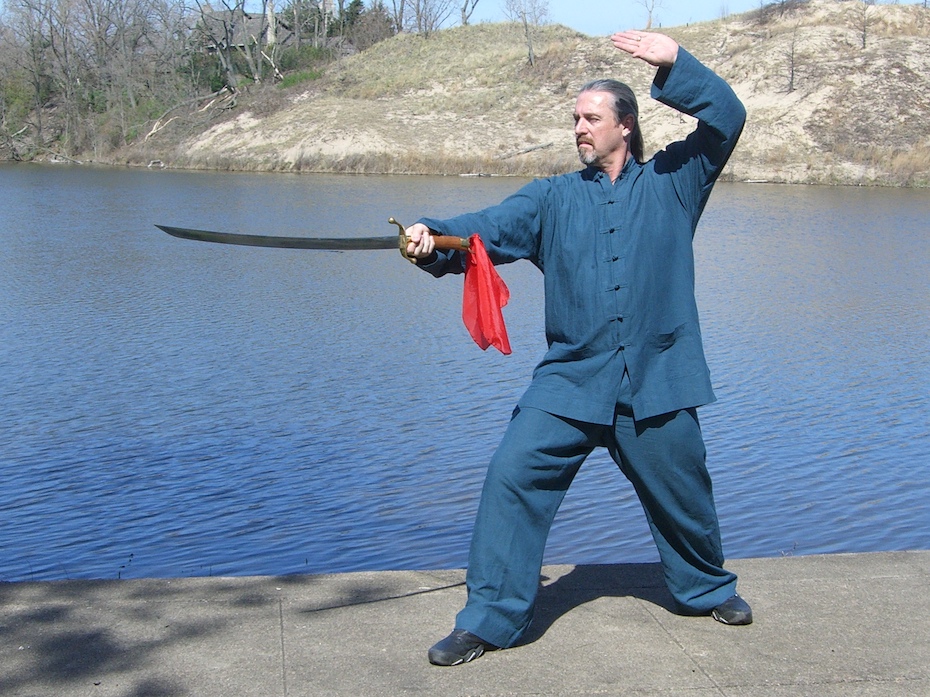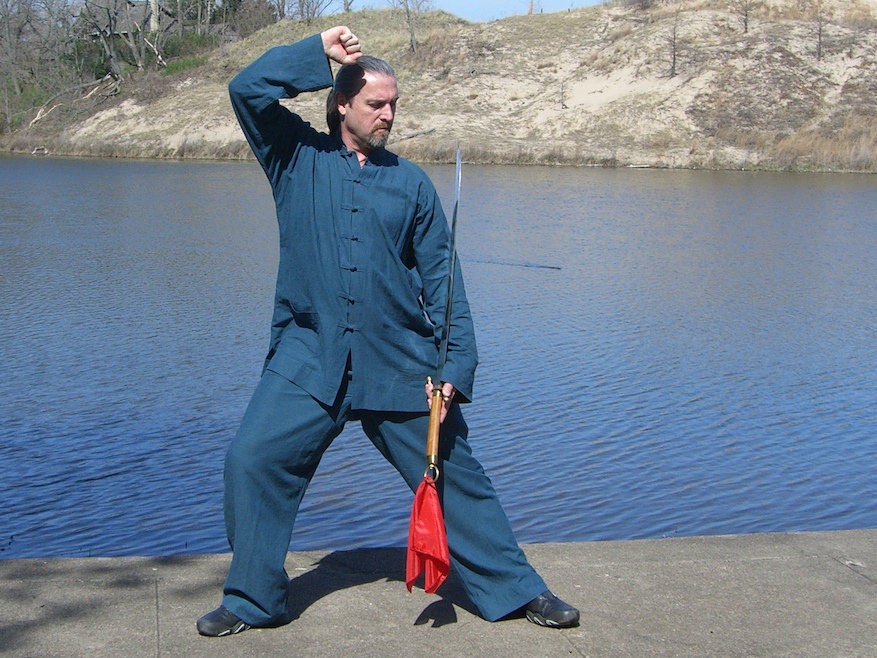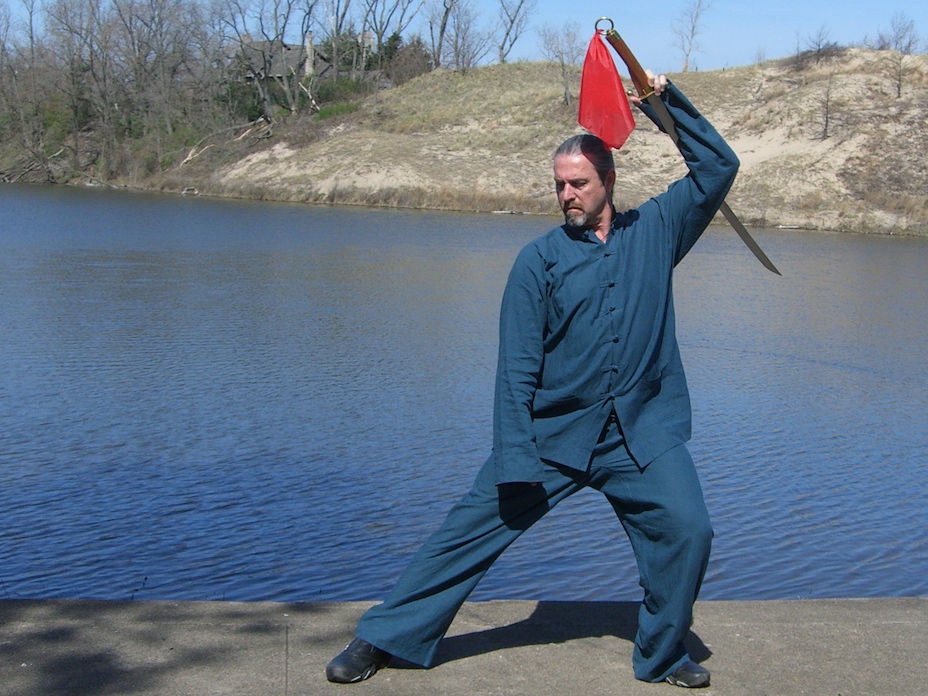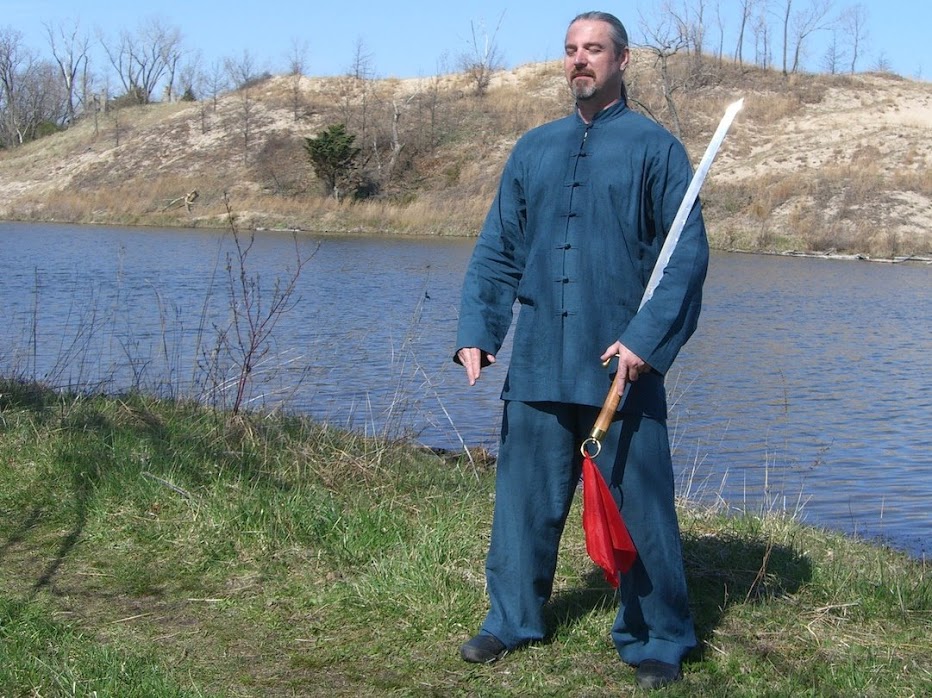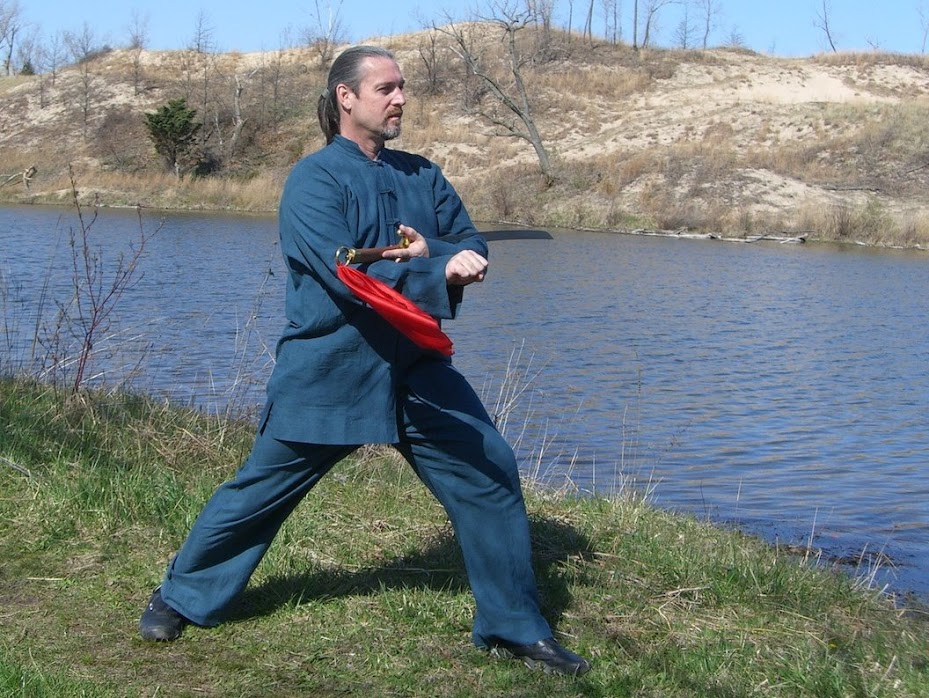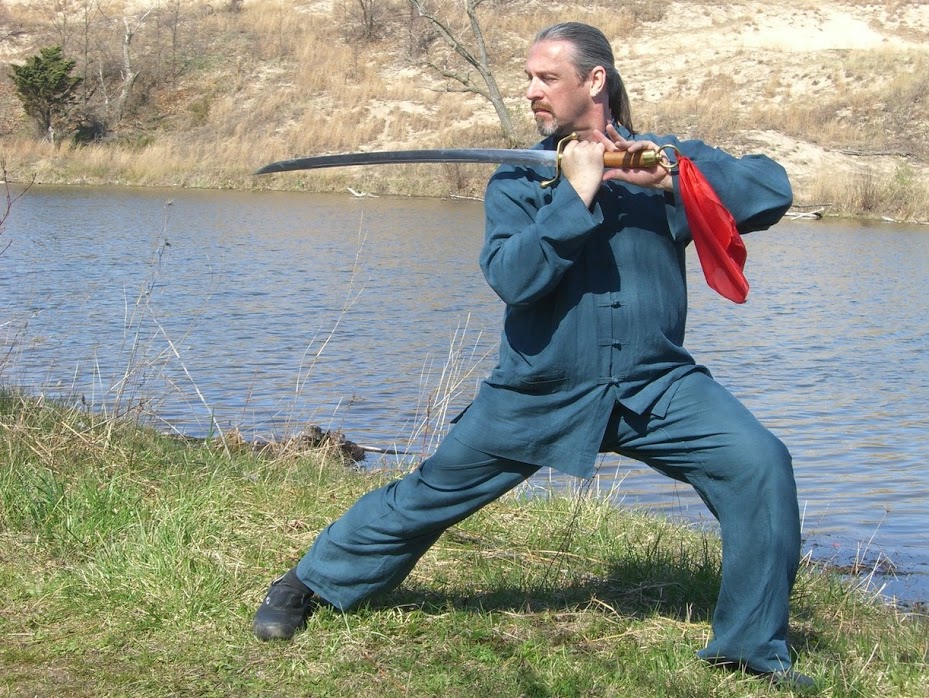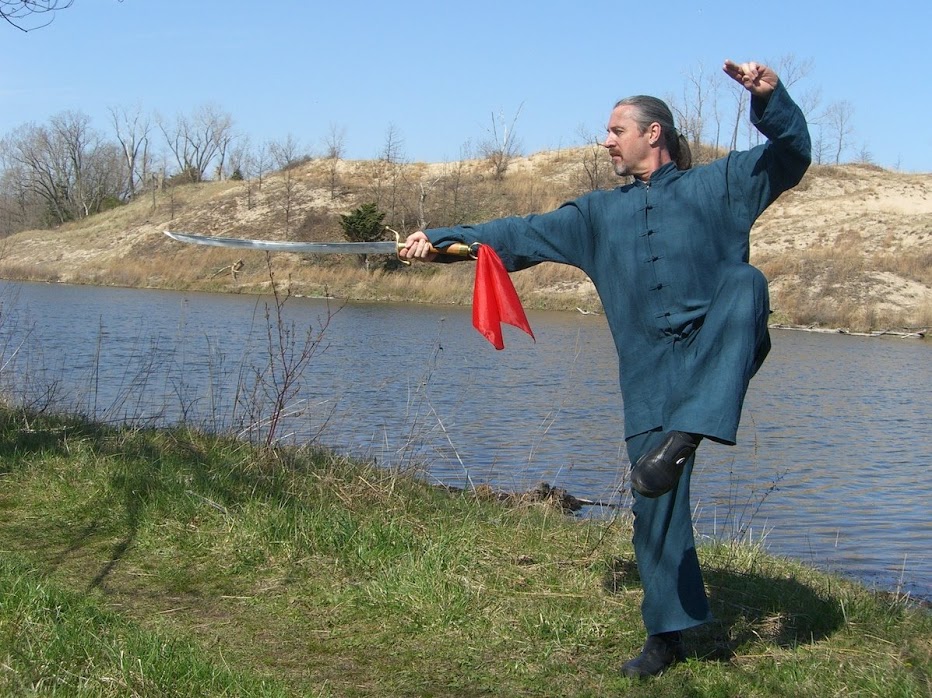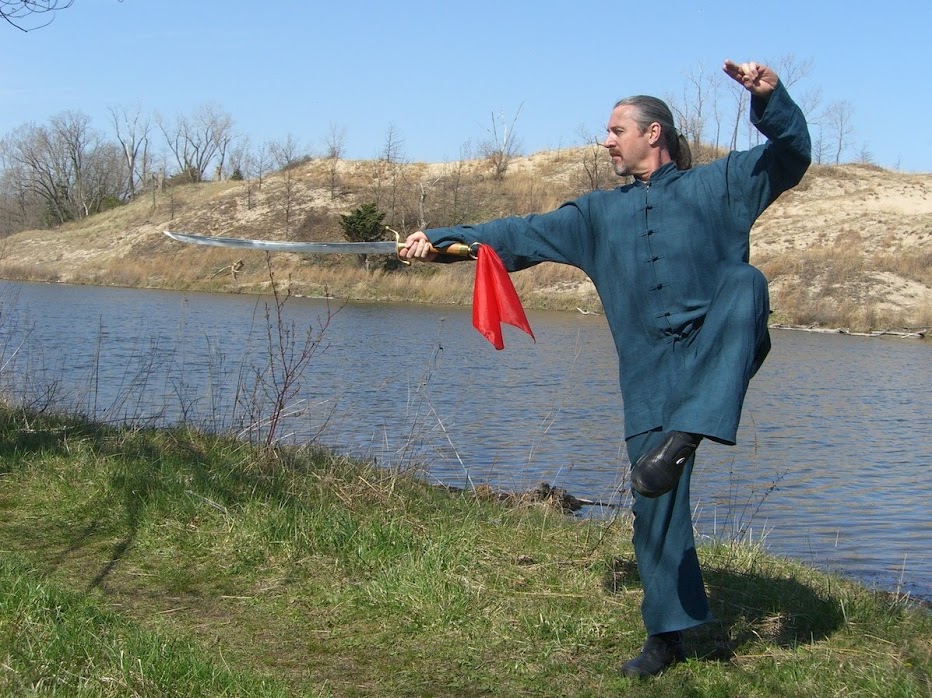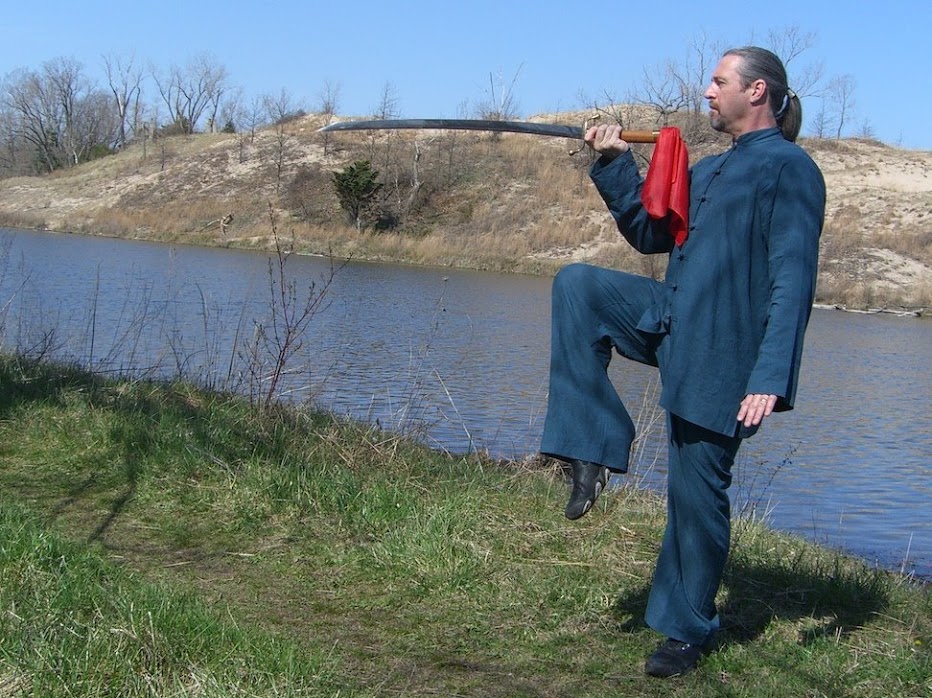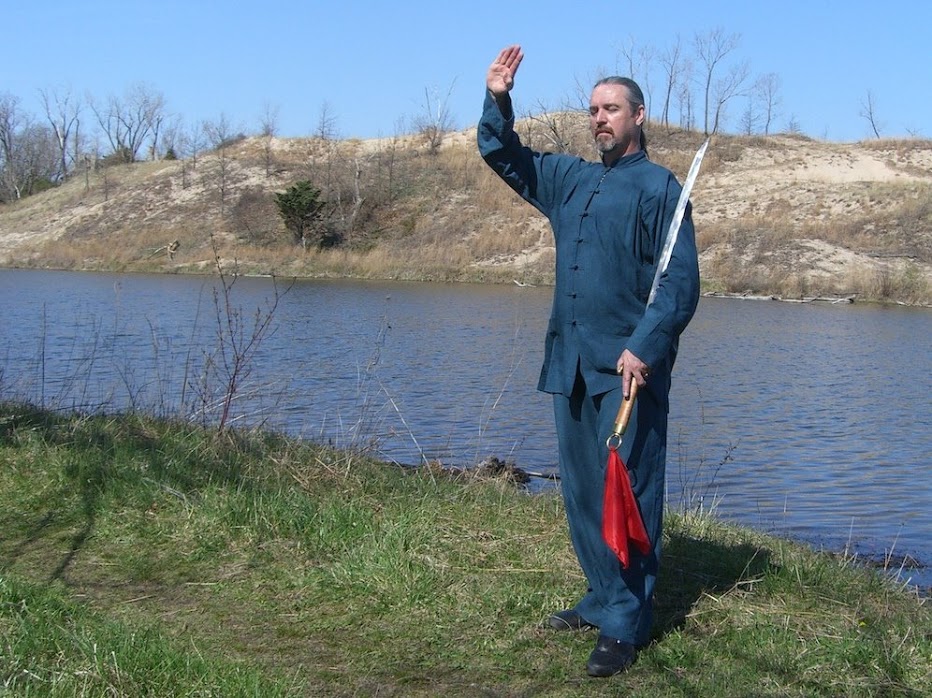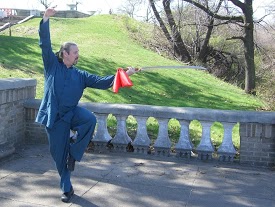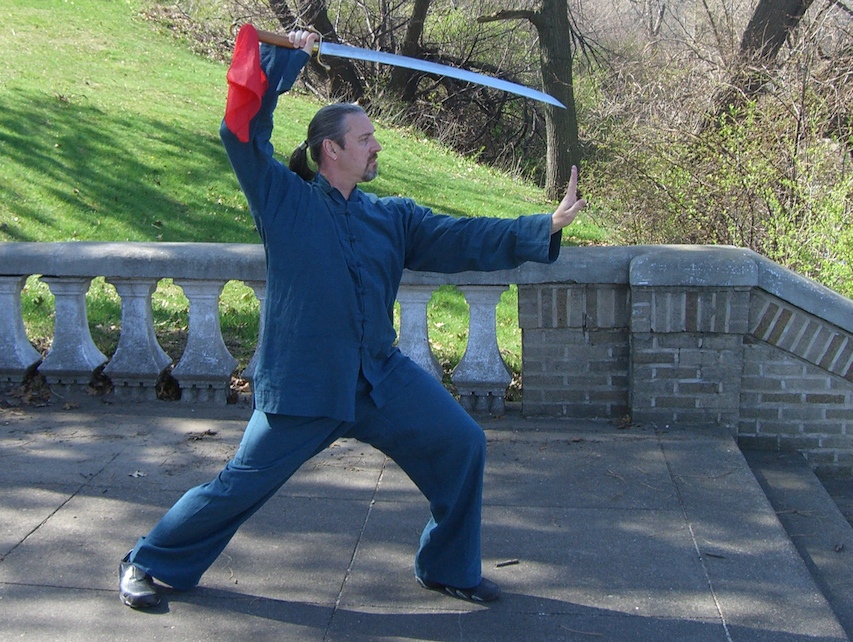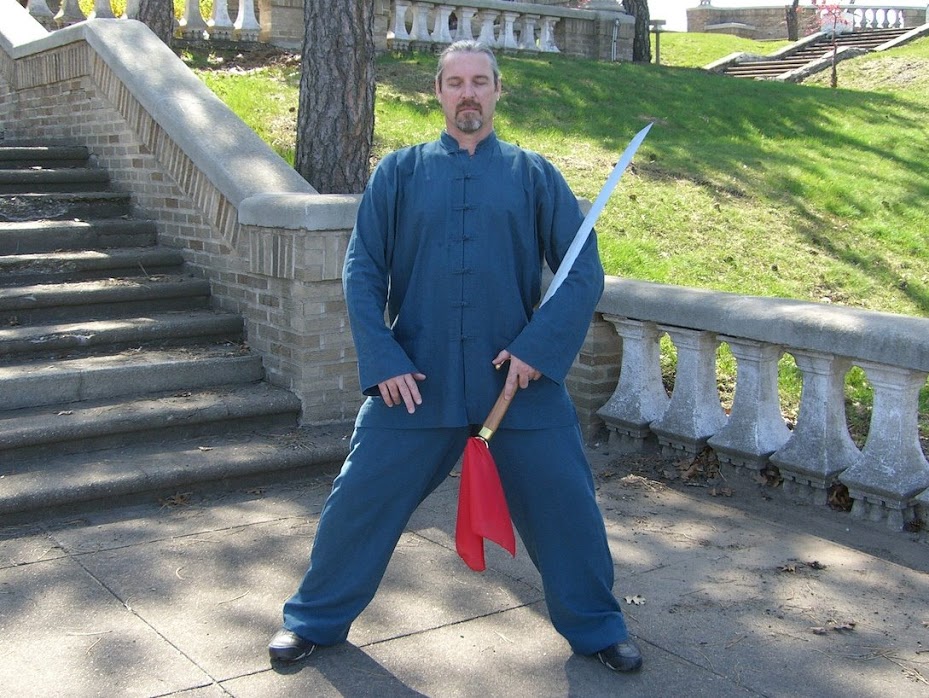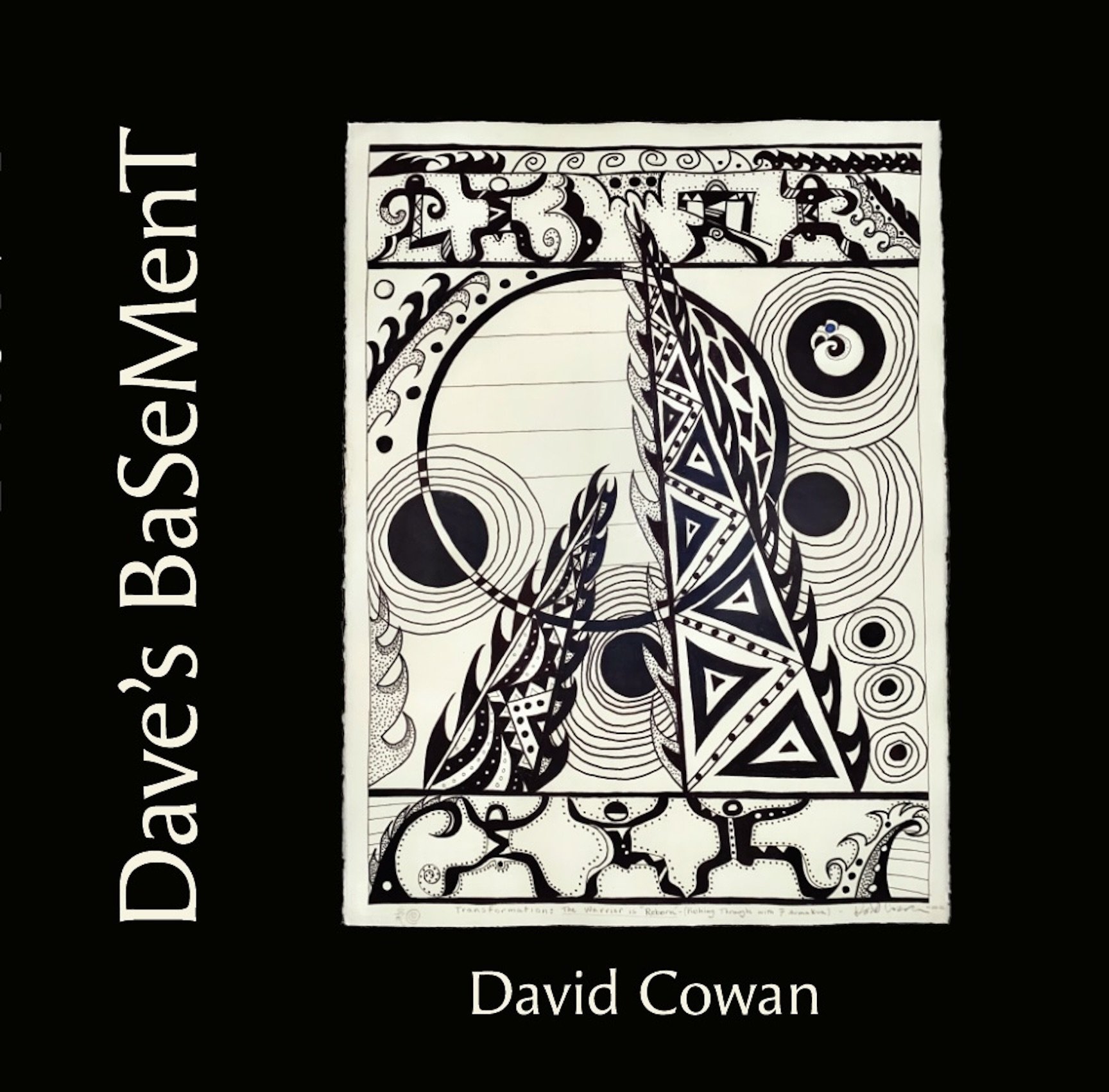“The first rule of medicine is do no harm... But while you are busy doing no harm, at least try to do a little bit of good.”
There are literally thousands of traditional and ultramodern forms of qigong practiced worldwide by millions people of many different faiths, some with exotic or poetic names: White Crane, Swimming Dragon, Spring Forest, Eight Pieces of Brocade, etc...
There are Qigong Standing Forms, Sitting Forms and Moving Forms, Hard & Soft Forms, Medical & Martial Art Forms, all utilize the same basic principles of practice irregardless of the name or variation you encounter. Qigong training forms can be broken down into three categories: External Training, Internal Training and Blended Training. The generic Qi Gong is actually an umbrella-that covers a wide variety of practices similar to the term Yoga. All this can seem confusing to both beginning and advanced students.
Traditionally, Qigong was taught through a lineage system and each Qigong Master acknowledged the debt owed their teacher and their teacher’s teacher and so on... Down distinguished lines of succession one generation passed its accumulation wisdom orally to the next. Overtime, key concepts of these various lineage systems distilled down into sutras: short phrases used as pneumonic training devices to aide students memorization. Sutras (literally: “threads”) when properly strung or sewn together seamlessly bind the basic training principles common to all.
The training sutras I share with you here do not belong to me. I received them from my teacher: Master Hou-Hee Chan, who in turn received them from his teacher: Grandmaster He–Ming Pang. Mastering these basic principles will eventually take you beyond form. For once you learn how to embody these training sutras you will be able to spontaneously create new qigong forms or learn how to gain the maximum benefit from any form you choose to practice. Qigong is a Living Art... Because it is organic, it grows... Each practitioner adds their own understanding to the Art of Living. In the Art of Qigong, you are the canvas. Your form itself is the artistic medium. You are both the Painter and the Painting; the Dancer and the Dance; the Singer and the Song… These sutras will help you play beautifully.
The Training Sutras*
1. Feet Touch the Earth…
How to: Begin by distributing your weight to the front at 70/30 with 70% of your weight on the balls of both feet and 30% on the heels. Slightly flatten down the arches of both feet and press (K1) Bubbling Well points firmly against the ground. Now relax your knees and sink your weight into both heels while maintaining pressure on your big toes. Continue to adjust your posture on the centerline—left/right and front/back—until your weight is 50/50. Push the earth down and feel as if your feet are deeply rooted in the ground. Relax. Do not lean back. Imagine that Earth Qi flows unimpeded upward through both legs and flows into the Lower Dan Tian.
Point of Interest: Yong Quan (Kidney 1) “The Bubbling Well.” Location: On the sole of the foot, between the second and third metatarsal bones, one-third the distance from the webs of the toes to the heel. Stimulating K-1 Descends Excess Qi, Calms the Spirit, Revives Consciousness, Rescues Yang Qi.
Commentary: This sutra reminds the qigongist of the fundamental human relationship to earth. Grounding in this way establishes a proper foundation and forms the basis for successful energy practice. According to Qigong Theory, man is a Hunyuan Entirety whose existence depends upon the constant blending of Earth-Qi, Heaven-Qi, and Human-Qi. Man provides the human element and serves as the “go” between heaven and earth. Man arises from the earth and grows upwards towards the heavens just as the trees that surround us. In order to reach out we must first become firmly rooted to the ground. When you practice, imagine that your feet send strong roots deep down into the earth in all directions. Become grounded, rooted, and centered. Feel the earth energy flowing up through the meridians of both legs until they feel like columns of Qi. Allow waves of energy to pulsate upward and let it nourish you from deep beneath the surface of the earth.
Practice Tips: Maintain flattened arches. Continually soften and relax. Press big toes down. Initially your feet may feel sore, achy, or even numb in certain areas. This is due to blocked meridians or stagnant Qi. Continued practice will improve or eliminate this condition.
2. Head as if Suspended from Above…
How to: Imagine being gently “pulled up” by an imaginary string that is attached to the crown of your head. Feel yourself “hang down” from your head and allow your spine to lengthen upward one vertebra at a time. Consciously breathe-out while releasing any pressure or tension that limits circulation to your spine. Feel yourself relax each vertebral disc. Adjust your posture until it balanced along your anatomical center-line. Feel for a soft inner-sensation of floating as if your head was literally suspended from above and your body was effortlessly hanging down from the skull.
Point of Interest: Bai Hui (Governing Vessel 20) Hundred Meetings. Location: On the midsagittal line, at the intersection of a line connecting the right and left ear apices. The Meeting Point on the Governing Vessel with the six yang channels. Stimulating Gov-20: Benefits The Head, Strengthens The Sea of Marrow, Calms The Brain, Calms The Spirit, Clears the Sense Organs, Raises Or Subdues Yang Qi.
Commentary: The goal here is to bring the body into proper anatomical posture along the midsagittal, coronal, and transverse planes. This requires consciously assuming control of our skeletal alignment, moving out of the typical “head-forward posture” into proper “head on top” posture. The head forward posture (HFP) places too much strain on the intrinsic muscles of the neck and spine besides being terribly inefficient and thus requiring unnecessary expenditures of energy to remain erect. HFP pressurizes the entire spinal column and neurologically irritates the nerve roots and the spinal cord itself. If unchecked it produces arthritic changes, spinal stenosis, scoliosis, and other degenerative diseases. This sutra emphasizes the importance of balancing our structural form along the center line instead of holding ourselves erect through muscle accommodation.
Practice Tips: Do not raise your chin. Your ears should be centered over the shoulders. Try imagining a teacup and saucer resting securely on the top of your head. (If you decide to try this exercise with a real cup and saucer do not use hot tea!)
3. Relax Low Back…
How to: With feet now grounded and head on top, allow the lumbar spine at the level of L2 / L3 to move backwards approximately 1-3 inches. Release all tension in the muscles of the low back.
Point of Interest: Mingmen (Governing Vessel 4) “Life Gate.” Location: On the lower back, below the spinous process of the second lumbar vertebra (L2). Stimulating Gov 4: Clears Heat, Regulates The Governing Vessel, Tonifies The Kidney, Benefits The Lumbar Spine.
Commentary: There is a myth that contends that the cause of low back pain is weak abdominal muscles. In fact, the number one cause of low back pain is over tightened and inflexible low back and abdominal muscles! When your low back hurts the first thing to do is:
Relax your low back…
Practice Tips: If you have trouble relaxing the low back and opening the Mingmen area, first, try pressing the Mingmen down flat on the floor. Do a little floor qigong/yoga, with your knees bent, and both feet flat on the floor. Press your lumbar spine firmly down against the ground and then relax. Press the Mingmen down and then relax…
4. Knees are Bent…
How to: Soften and relax the knees without squatting down. Unlock but do not bend the knees. The knee caps should move approximately 1 -2 inches forward and soften the back of the knee. Imagine your knees are buoyant springs.
Point of Interest: Wei Zhong • Bladder 40 “Bend Middle.” Location: At the midpoint of the popliteal fossa. Command Point for the Upper and Lower Back. Earth Point on Water Meridian. Stimulating B-40: Strengthens The Lumbar Region, Cools Blood, Clears Summer Heat, Benefits The Bladder, Alleviates Pain, Tones Kidney Qi, and Clears the Blood.
Commentary: The knees are meant to be “shock absorbers” not used as stilts. When the knees are locked backward it disrupts the flow of Qi through the Bladder Meridian and places too much strain on the low back.
Practice Tips: Unlocking the knees is the secret to unlocking the back.
5. Tailbone Points to the Ground…
How to: Slightly rock the pelvis back approximately 10 degrees until the tailbone points towards the ground. Imagine your tailbone is very long and can reach the ground. Let this imaginary tailbone form serve as the third leg of a tripod. Slightly raise the Hui Yin point by gently contracting the muscles of the pubocoxigeal region (a Kegel-exercise).
Point of Interest: Hui Yin (Conception Vessel-1) “Meeting of Yin.” Location: In the perineal region, at the midpoint between the anus and the posterior border of the scrotum in males and the posterior labial region in females Meeting Point on the Conception Vessel with the Governing and Penetrating Vessels.
Commentary: This sutra helps to stabilize the posture. When qigongists stand in a Qigong or Tai Chi stance it is at all times dynamic. The goal is to feel at once centered, stable and springy.
Practice Tips: Now that you have unlocked your “kangaroo knees” sink your weight and feel for the stability of your “Kangaroo Tail.”
6. Fold the Kwa…
How to: The “Kwa” refers to the Bilateral Inguinal Creases of the groin region. To fold the Kwa, engage the abdominal muscles and slightly tip the pelvis up at the point of the Pubic Symphysis in order to properly balance the pelvis and lumbar spine. Have a feeling of rolling the thighs slightly inward at the same time and allow yourself to rest more deeply on the imaginary tripod formed by the feet and tailbone (Kangaroo Tail).
Commentary: This maneuver deepens the “sitting” sensation and also engages the abs for proper abdominal breathing. During the inhale phase of breath the abdomen should not distend but rather the diaphragm should slowly drop while the ribs also expand in the back in the region of the Kidneys and Mingmen. This is known as Lower Dan Tian Breathing.
Practice Tips: Do not look like a “Happy Buddha.” Hotie—the familiar Chinese version of the Smiling Buddha—is always pictured with a very full and relaxed belly. This image of the Buddha serves several purposes, it reminds qigongists to breathe fully from the abdomen—Hotie is depicted during his in-breath. But also, for a people who have endured famine after famine over the centuries, Hotie’s belly also represents: Good Fortune, Abundance, Harmony, and Prosperity—i.e. “plenty of food for all!” In reality, Guatama Siddhartha Buddha was a yogic ascetic as well as a vegetarian. So in no way was he cultivating a “Buddha Belly” and it is certainly not the same as letting oneself go... That is known as cultivating a “Bubba Belly.”
7. Sitting but Not Sitting…
How to: While relaxing all the muscles of the feet, legs, pelvis, low back, spine, torso and abdomen, and with tailbone pointing towards the ground, fold the Kwa and change the angle of the pelvis as if in the act of sitting down. Rest in this poised state as if sitting comfortably on your “kangaroo tail.” Flatten the natural lumbar curve by slightly moving the Mingmen area slightly backwards 1-2 inches. Relax and balance the spine, neck, and shoulders. Release all muscle tension in the legs and back as if “sitting but not sitting.”
Commentary: Sutras 1-7 are all intended to help you stabilize and refine your basic Qigong or Tai Chi stance. This is called Wuji (“Void-Body”) or Emptiness Pose. It is also called “Standing Like A Post,” “Mountain Pose,” “Tree Standing Pose” and “Ego-Reducing Pose.” When the body is aligned with Wu (“Void” or “Universe”) we are free from the turbulence of human emotion. This loosens the hold of the personality or “ego” and helps the qigongists calm their Xin (“Heart-Mind”) thus freeing the practitioner from the unnecessary emotional energy.
The Chinese believe that Humans have two minds, the Xin or “Emotional-Mind” and the Yi or “Wisdom-Mind.” Learning to calm and control the Xin greatly reduces our stress levels. The practice of controlling the Xin allows for more clarity in thought, feeling and action. The Chinese say: “Use Your Yi to Guide Your Qi.” This is fundamental to all Qi-circulating exercises and meditation. Calming the Heart calms the Mind and helps create and support an inner stillness.
This practice of “inner stillness” greatly reduces our energy expenditure and enhances our general circulation. The more relaxed we become physically, the freer we become from the influences of negative emotional energy. Being chronically upset or stressed is a bad habit. It raises blood-pressure and interferes with the proper function of our organs. This is why the Chinese also say: “Qi And Blood Flow Together.” This means that wherever our energy does not circulate our blood stagnates. Qi in the form of negative emotional energy (Stress) forces us to contract our muscles in a fight-flight-freeze response that restricts our ability to breathe and our ability to move. Learning how to relax and let-go, how to figuratively “settle down” releases unnecessary muscle tension and frees our energy and breath for immediate stress relief. In other words, all the sutras up to this point are designed to help you navigate the subtle nuances of relaxing internally thus establishing the proper foundation for standing meditation practice.
Practice Tips: “Sitting but Not Sitting” does not mean “pretend to be seated.” Try imaging firm support on the lumbar spine, as if resting your back against the backrest of a chair, not as if sitting down upon the sits-bones! Imagine extra support for your spine not your butt. In other words, one is “ever-sitting” without ever being seated. This creates a very dynamic sensation—as if just beginning to sit down without actually finding a seat to sit on.
8. Tongue Touches Upper Palate…
How to: Place the tip of your tongue lightly but firmly against the roof of your mouth at the meeting point of the hard and soft palate. (Or at least somewhere behind the front teeth.)
Point of Interest: Yin Jao (Governing Vessel-28) “Gum Intersection.” Location: In the mouth, at the junction of the frenulum of the upper lip with the upper gum. Meeting Point on the Governing Vessel with the Conception Vessel. A vital point for Qi-tapping to help alleviate neck pain & stiffness and to calm the Spirit.
Commentary: A key to Chinese Meditation practice is touching the tip of the tongue to the upper palate somewhere behind the teeth. This is thought to energetically connect the Governor Vessel (Ren Mai) with the Conception Vessel (Du Mai) forming a grand circulation system that feeds all collateral meridians. This is commonly referred to as the Microcosmic Orbit.
Activating the Microcosmic Orbit is a beginning step that leads to more advanced internal practices. Daoists believe that activating the Microcosmic Orbit fills the Reservoirs (3 Dan Tian) of the Governing and Conception Channels with energy, which is then distributed to all the major organ-energy meridians, thereby energizing and nourishing the internal organs.
Similar to Kundalini Yoga practice, the Microcosmic Orbit technique draws abundant energy up the spinal column from the sacrum into the brain, thereby enhancing cerebral circulation and stimulating secretions of vital neurochemicals. "What goes up must come down..." The Chinese innovation to Kundalini is that the tongue also then draws the raised energy down through the heart (Middle Dan Tian) and to the gut (Lower Dan Tian). This is perhaps the most widely known Daoist method for cultivating health and longevity. Performing the Grand Circulation for 30 minutes a day is said to lead to higher spiritual awareness.
Practice Tips: Placing the tongue on the upper palate creates “Heaven’s Cup” (The area directly under the tongue.) Large amounts of saliva may pool there. This technique can be used to slake thirst during extensive meditation practice. The tongue tip against the upper palate also relaxes the masseter muscles of the jaw by slightly parting the teeth and helping to create a Buddha-like grin. The lips should never be parted! The Daoist "Inner Smile" is accomplished with the eyes. They should slightly twinkle and sparkle!
9. Drop Shoulders…
How to: Using the muscles of the ribcage and torso gently pull down the shoulders and relax all tension in the neck.
Point of Interest: Qi Hu (Stomach 13) “Qi Door” Location: In the infraclavicular fossa, on the midclavicular line. Meeting Point on the Stomach Channel with the Kidney, Large Intestine, Triple Burner, Pericardium, and Lung Channels. Stimulating Qi Hu lowers rebellious qi and unbinds the chest.
Commentary: “Long neck means long life.” For ages the Chinese have revered the White Crane for its grace, beauty and strength. In China the White Crane is a symbol for long life because of its long neck. Dropping the shoulders has the effect of lengthening the appearance of the neck by relaxing the tension in the shoulders. When the shoulders are unnaturally high we are said to be visibly upset or uptight. Dropping the shoulders down rids the Qi Hu area (or the Thoracic Outlet) of unnecessary tension and helps in maintaining proper skeletal alignment. Lowering the shoulders generates greater power throughout the body precisely because it frees the muscles of the shoulders, chest and neck of excessive tension. When the shoulders are high, the neck is too short and your Qi flow will be blocked. Opening the “Qi Door” (Qi Hu) greatly improves energy circulation, while chronically tight shoulders and a stiff neck rob us of vitality.
Practice Tips: “Use the torso more so!” If dropping the shoulders proves to be difficult try using the muscles of the torso—the Pectoralis, Rhomboids, Intercostals, Paraspinals, Latissimus Dorsi and Subscapularis—to pull the shoulders down. Relax means: “Lax Again.” And Lax means: “to lengthen or slacken; to restore proper resting length.”
10. Go Out In Six Directions…
How to: Imagine your body expanding towards the horizon in all directions: Up, Down, Front, Back, Left, and Right. Feel the expansion of your personal energy field moving out in all directions to connect with the Blue Sky. Continue moving outwards towards the stars until the earth feels like a small ball resting in the center of your body (Lower Dan Tian).
Commentary: “Exchange Qi with Nature.” In order to successfully exchange Qi with nature we must move beyond the boundaries of our “personal self” with all our “personal problems” and remind ourselves of the fundamental relationship. In Chinese medicine man is seen as a microcosm (human being) within a macrocosm (Universe). Personal stress interferes with the natural laws of balance and harmony. The True Man is seen as a reflection of nature and the cosmos and our bodily processes are likened to seasonal changes. The meridian/organ system is similar in concept to oceans, seas, reservoirs, rivers, swamps, and deserts and our many health changes are likened to the seasonal activities of storms, floods, droughts, and viewed as the ever activity of weather, the sun, moon and constellations. Nature knows the Natural Law (Tao). “Exchanging Qi with Nature” is a way of saying: “restore the natural balance.” Release the causes of illness by surrendering the “micro” to the “Macro.” Man is a Hunyuan (blend) of Heaven Qi and Earth Qi. Let-go of the unnatural human tension and allow the natural order to re-enter and re-store your bodily processes to their rightful balance (Homeostasis.) Allow nature to enter your core by relaxing the body, mind, and emotions. Think Blue Sky! Not more problems.
Practice Tips: Visualize! Use your mind’s eye to see your energy field expand out and mingle with the Blue Sky which surrounds the entire earth. Actually feel the earth centered in the belly and leave your body behind... From this expanded and rarified perspective there are no personal problems. Therefore, there is nothing to be upset about! As my Taiji Master says: “Think: Something clean coming in. Something dirty going out. Do not think about Qi.” This is the deepest of secrets.
*Excerpted from: The Art of Self-Healing: As Supple As A Child by David Cowan, RN (2007)
